Inhambane is a biodiversity hotspot and one of the most critical habitats for birds in the world. With various habitats, including wetlands, woodlands, savannahs, and coastal areas, Inhambane is home to many bird species.
More than 500 species of birds have been recorded in the region, including waterfowl, raptors, passerines, shorebirds, seabirds, and more. Many of these species are migratory, meaning they travel throughout the year to Inhambane from other parts of the world.
Inhambane is also home to numerous endemic and endangered bird species, making it a haven for birdwatching enthusiasts.
24 Birds to Watch in Inhambane
Inhambane is a province in Mozambique that boasts a rich diversity of birdlife. With habitats ranging from wetlands and woodlands to savannahs and coastal areas, Inhambane is home to more than 500 species of birds, including many endemic and endangered ones.
Whether you are a beginner or an expert birder, you will find plenty of opportunities to enjoy the avian wonders of Inhambane. Here are 24 birds that you should not miss when visiting this region.
1. Little Egret
The little egret is a beautiful bird found in the family Ardeidae. It has a delicate white plumage and a slender black beak, both striking features.
Its legs are also black, and the western race of this species has yellow feet. This bird is an aquatic creature that prefers shallow waters to feed. It consumes a wide variety of small prey in the water and on land.
Its varied diet includes crustaceans, insects, small fish, and amphibians. The little egret is an elegant bird often seen in wetlands, estuaries, and marshes.
Its white plumage stands out against the green vegetation of its habitats, and its long legs enable it to wade through water with ease. It is a graceful sight to behold. The little egret is an essential species in the wetlands of many countries.
Its presence helps maintain the balance of the ecosystem as it feeds on small creatures that can damage other species if left unchecked. For this reason, it is an important species that needs to be protected.
| Kingdom | Animalia |
| Phylum | Chordata |
| Class | Aves |
| Order | Pelecaniformes |
| Family | Ardeidae |
| Genus | Egretta |
| Species | E. garzetta |
2. Laughing Dove
The Laughing Dove is a species of small pigeon found in many parts of the world. It is found in Africa, the Middle East, South Asia, and Western Australia. The Laughing Dove established itself in the wild in Western Australia after being released from Perth Zoo in 1898.
The species is a resident breeder, meaning it lives in the same area year-round and reproduces in that area. It builds a small platform nest, generally in a tree, bush, or on a building.
The Laughing Dove is known for its distinctive call, a series of soft, raspy hoots. It feeds on seeds, small insects, and fruits. The Laughing Dove is a popular and adaptable bird often seen in urban areas.
Its presence greatly benefits the environment, as it helps control seed and insect populations.
| Kingdom | Animalia |
| Phylum | Chordata |
| Class | Aves |
| Order | Columbiformes |
| Family | Columbidae |
| Genus | Spilopelia |
| Species | S. senegalensis |
3. Greater Flamingo
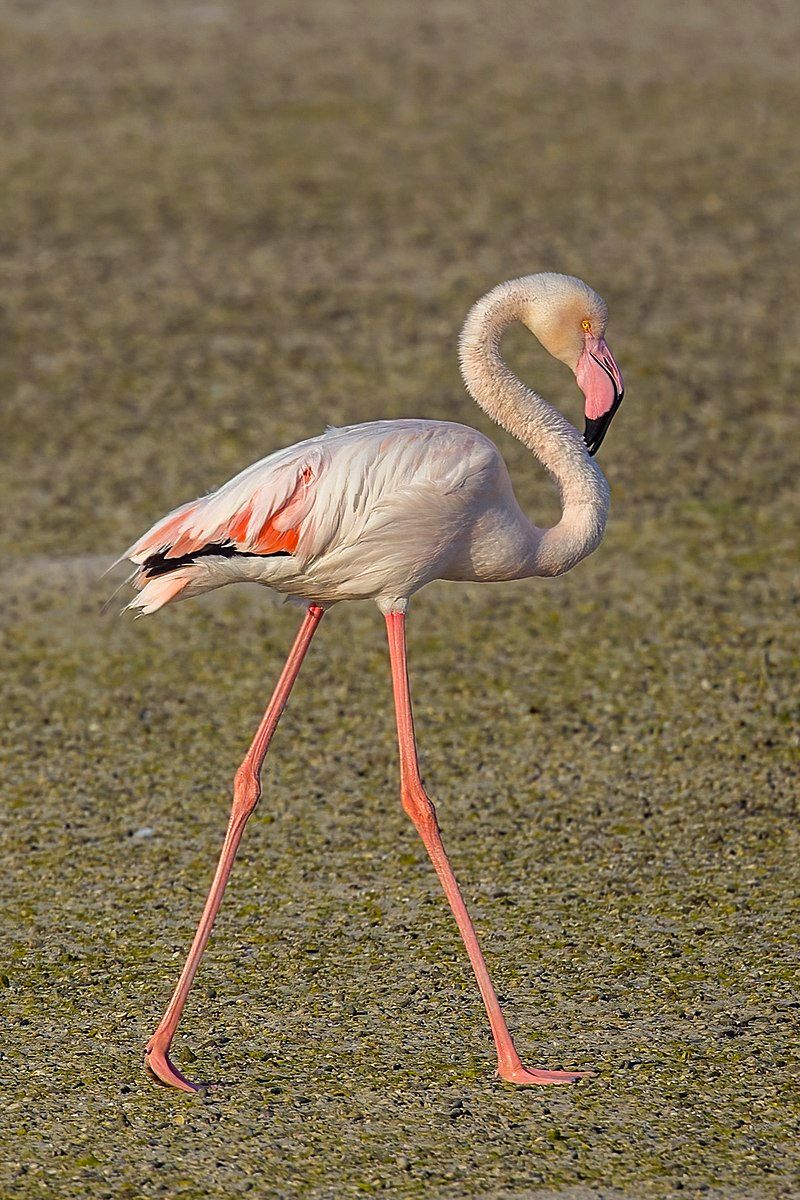
The greater flamingo is the most widespread and significant species of the family.
This species is found in many different regions worldwide, including Northern and Sub-Saharan Africa, the Indian Subcontinent, the Middle East, the Levant, the Persian Gulf, the Gulf of Aden, the Red Sea, and the Mediterranean countries of Southern Europe.
This bird has a distinctive pink plumage, long legs, and a curved neck. Its wingspan ranges from 3.3 to 4.3 feet, and it stands up to 4.7 feet tall. The greater flamingo is a highly social bird, living in large colonies with hundreds or thousands of other flamingos.
They feed on aquatic plants, small invertebrates, and algae. During the breeding season, males perform elaborate courtship displays, bowing, shaking their heads, and honking.
Nesting occurs between April and July, with females laying a single egg in a mound of mud and vegetation. The greater flamingo is classified as a species of Least Concern by the International Union for Conservation of Nature (IUCN).
The population is estimated to be around 500,000 individual birds, which is thought to be declining due to habitat destruction, pollution, and overfishing. Conservation efforts are being made to protect this species and its habitat.
| Kingdom | Animalia |
| Phylum | Chordata |
| Class | Aves |
| Order | Phoenicopteriformes |
| Family | Phoenicopteridae |
| Genus | Phoenicopterus |
| Species | P. roseus |
4. Black-winged Stilt
The black-winged stilt is a type of bird that belongs to the avocet and stilt family. It can be found in many parts of the world and is easily distinguished by its long legs. Its scientific name is H. himantopus, and this species is found almost everywhere.
The black-winged stilt is a wading bird, which means it spends most of its time wading in shallow waters. It has black wings with white patches, and its long legs are grayish-black. Its long-legged appearance makes it easy to spot in its natural environment.
The bird eats insects, fish, worms, and small crustaceans. The black-winged stilt is a migratory bird that usually migrates to warmer climates during the winter. During the breeding season, it is known to inhabit wetlands and marshes, where it builds its nests on the ground.
The nests are usually constructed with grasses and other materials and lined with feathers. The black-winged stilt is an integral part of the ecosystem and an indicator species for the health of wetlands and marshes.
It is a protected species, meaning hunting or capturing them is illegal. Protecting their habitats and ensuring access to the resources they need to survive is essential.
| Kingdom | Animalia |
| Phylum | Chordata |
| Class | Aves |
| Order | Charadriiformes |
| Family | Recurvirostridae |
| Genus | Himantopus |
| Species | H. himantopus |
5. African Green Pigeon
The African green pigeon is a type of bird that belongs to the Columbidae family. It is one of five green pigeon species in the Afrotropics, a biogeographic region that includes parts of Africa, Madagascar, and the Arabian Peninsula.
The African green pigeon is widespread in Sub-Saharan Africa, with approximately 17 accepted races. The African green pigeons are believed to thrive in various areas, from dry, arid regions to humid areas with plenty of vegetation.
The bird is typically seen perched on trees or foraging for food on the ground. Its diet consists of fruits, nuts, and seeds, and it often visits urban areas and agricultural fields.
The African green pigeon is an essential species for local economies, as it is a famous game bird and is often hunted for food. Additionally, the bird’s droppings are rich in nitrogen and are used as fertilizer in some parts of Africa.
| Kingdom | Animalia |
| Phylum | Chordata |
| Class | Aves |
| Order | Columbiformes |
| Family | Columbidae |
| Genus | Treron |
| Species | T. calvus |
6. Eurasian Whimbrel
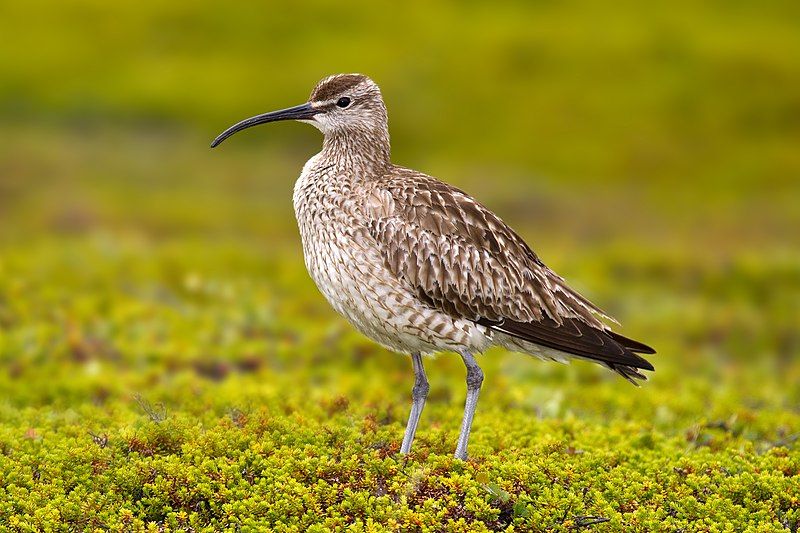
The Eurasian or common whimbrel is a wader bird belonging to the family Scolopacidae. It is found across much of the subarctic regions of Asia and Europe. It is also known as the white-rumped whimbrel in North America.
The whimbrel is one of the most widespread species of the curlews, extending as far south as Scotland. The Eurasian or common whimbrel is a medium-sized wading bird with a long, down-curved bill.
It has mottled brown-and-black upperparts, white underparts, and a distinctive white rump patch. It has a white eye stripe, dark legs, and a long, pointed tail. The adult Eurasian or common whimbrel has buff-colored breasts, neck, and head, with black streaking.
The juvenile has a browner head and neck. The Eurasian or common whimbrel feeds on small invertebrates such as crustaceans, worms, mollusks, and insects. It also scavenges for food on mudflats and shallow waters. It breeds in open areas such as tundra and grassland.
During the breeding season, the Eurasian or common whimbrel will construct a shallow nest on the ground. The female usually lays three to four eggs. The Eurasian or common whimbrel is a migratory species, with some populations wintering in Africa.
It is an essential species in conserving wetland habitats, as it is a keystone species in these areas. It is also an important species for recreational birdwatching.
| Kingdom | Animalia |
| Phylum | Chordata |
| Class | Aves |
| Order | Charadriiformes |
| Family | Scolopacidae |
| Genus | Numenius |
| Species | N. phaeopus |
7. Little Grebe
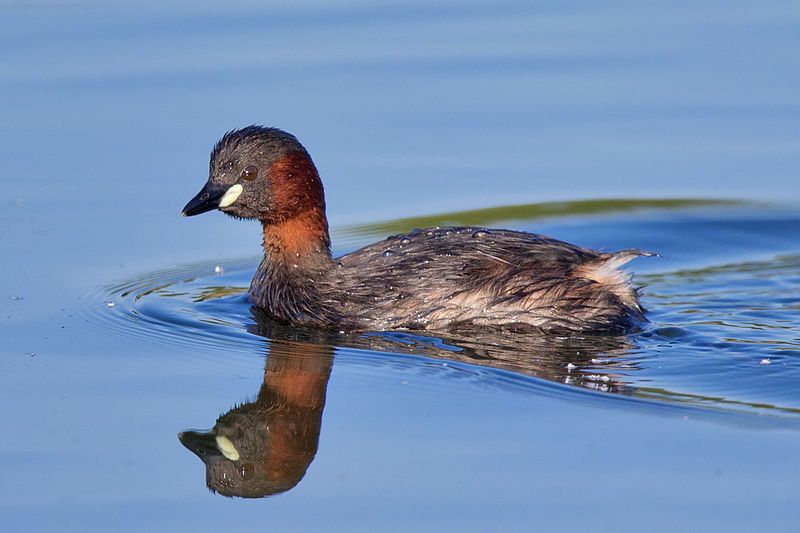
The little grebe, also known as dabchick, is a small water bird that belongs to the grebe family.
It is distinguished by its scientific name, derived from the Ancient Greek term takhus, meaning “fast,” and bapto, meaning “to sink under.” The specific name ruficollis also has a Latin origin.
Rufus means “red,” while collum translates as “neck,” and -Collis is derived from Modern Latin, meaning “necked.” This indicates that the little grebe has red plumage on its neck.
The combination of these two names gives us a very accurate description of the little grebe’s physical characteristics.
| Kingdom | Animalia |
| Phylum | Chordata |
| Class | Aves |
| Order | Podicipediformes |
| Family | Podicipedidae |
| Genus | Tachybaptus |
| Species | T. ruficollis |
8. Red-eyed Dove
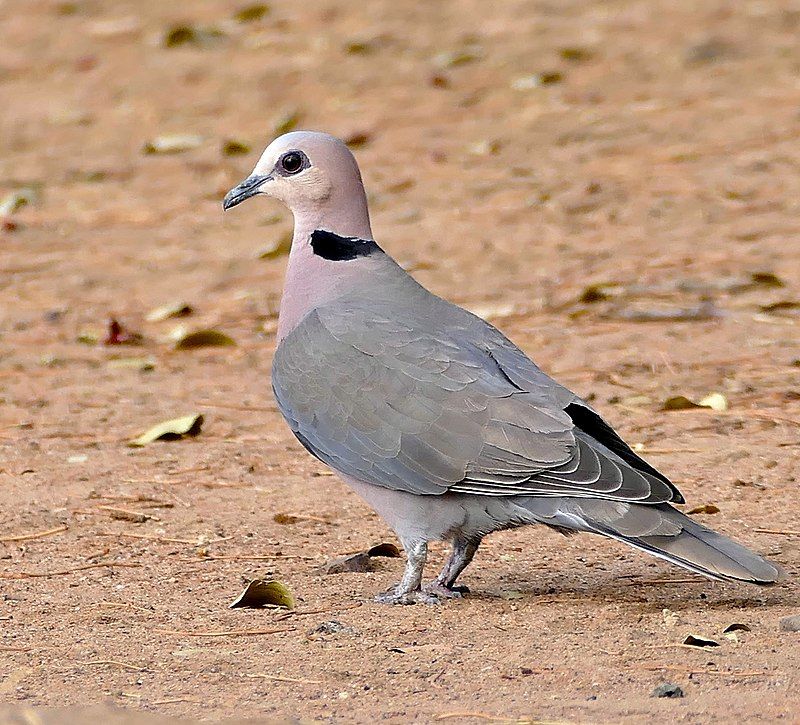
The Red-eyed Dove (Streptopelia semitorquata) is a dove species found in various sub-Saharan African countries. This species is considered to be quite widespread throughout this region.
The IUCN Red List of Threatened Species, the world’s most comprehensive inventory of the conservation status of biological species, categorizes the Red-eyed Dove as being of ‘Least Concern’ since 2004.
This means that while it is still monitored to ensure that its population remains healthy, the species is not in any immediate danger of extinction.
The Red-eyed Dove is generally found in lightly wooded savanna and semi-arid areas, although it can also be found in more open and cultivated areas. It is a medium-sized dove with a predominantly gray body, black bill, and its most distinctive feature: red eyes.
Its diet mainly comprises seeds, grains, and other plant matter. This species is often found in pairs or small flocks and can be heard calling out its distinctive cooing song.
Overall, the Red-eyed Dove is a species that is both abundant and widespread in its natural habitat in Sub-Saharan Africa. Despite its presence in many areas, its population remains stable and healthy.
Thanks to its current status on the IUCN Red List, this species is being protected and monitored to ensure that it continues to thrive.
| Kingdom | Animalia |
| Phylum | Chordata |
| Class | Aves |
| Order | Columbiformes |
| Family | Columbidae |
| Genus | Streptopelia |
| Species | S. semitorquata |
9. White-browed Coucal
The white-browed coucal, also known as the lark-heeled cuckoo, is a species of cuckoo found in sub-Saharan Africa. It is an adaptable bird, inhabiting a wide range of habitats, from rank undergrowth and scrub to coastal areas with thick cover.
In some cases, Burchell’s coucal is regarded as a subspecies of the white-browed coucal, though there is some debate around this classification.
The white-browed coucal is an intriguing species known for its distinctive call and habit of perching on one foot in open areas as it searches for prey.
They are also notable for their ability to mimic the calls of other birds, making them a vital part of the avian ecosystem in sub-Saharan Africa.
| Kingdom | Animalia |
| Phylum | Chordata |
| Class | Aves |
| Order | Cuculiformes |
| Family | Cuculidae |
| Genus | Centropus |
| Species | C. superciliosus |
10. Fiery-necked Nightjar
The fiery-necked nightjar is a species of bird found in parts of Africa south of the equator. It is part of the Caprimulgidae family, a group of birds commonly referred to as nightjars.
This bird species is known for its distinct and often heard call, which is said to sound like “good-lord-deliver-us.”
The fiery-necked nightjar has a unique look with its grayish-brown plumage and the bright orange-red patch on the sides of its neck. The fiery-necked nightjar is typically active at night and is usually found in dense woodlands and savannahs.
It is a ground-dwelling species that spends much of its time on the ground. Its diet consists mainly of insects, which it captures during its nocturnal activities. The fiery-necked nightjar is considered to be a shy species.
It usually remains still and quiet when disturbed by human activity, making it difficult to spot. However, its distinctive call is the most noticeable thing about it.
The call is often heard at night as the bird tries to attract a mate. Overall, the fiery-necked nightjar is a fascinating bird species found in parts of Africa south of the equator.
It is a nocturnal bird that feeds on insects and is known for its unique call that sounds like “good-lord-deliver-us.” With its stunning plumage and shy nature, it is a species that should be appreciated and admired.
| Kingdom | Animalia |
| Phylum | Chordata |
| Class | Aves |
| Clade | Strisores |
| Order | Caprimulgiformes |
| Family | Caprimulgidae |
| Genus | Caprimulgus |
| Species | C. pectoralis |
11. Namaqua Dove
The Namaqua dove is a small pigeon species found in many habitats across Sub-Saharan Africa, Arabia, and Madagascar. It is the only species in its genus, Oena, known for its distinct appearance.
The dove has a brownish-grey body, white collar, brown eyes, and a long, pointed tail. Its wings are slate blue with a white edge and a black tip. The Namaqua dove is a ground-dwelling species that prefers to feed on the ground but can also feed in trees.
It is also known to feed on the seeds of grasses, trees, and shrubs. It can be seen in small flocks or pairs and often around open woodlands, savannas, and grasslands. The Namaqua dove is a highly adaptable species that is well-suited to a variety of environments.
It can survive in both arid and semi-arid habitats and can also be found in urban areas. This species is currently listed as Least Concern on the IUCN Red List, as its population is thought to be stable.
| Kingdom | Animalia |
| Phylum | Chordata |
| Class | Aves |
| Order | Columbiformes |
| Family | Columbidae |
| Genus | Oena |
| Species | O. capensis |
12. Levaillant’s Cuckoo
François Le Vaillant was a French explorer, collector, and ornithologist honored with a cuckoo species named after him. The Levaillant’s cuckoo is a resident breeding species found in Athat south of the Sahara in bushy habitats.
It is a brood parasite, meaning it will lay its eggs in the nests of other birds, such as bulbuls and babblers, and let them raise its young. This evolutionary tactic allows the cuckoo to save energy and resources, as it does not need to build and defend its own nest.
The Levaillant’s cuckoo is a beautiful bird with brownish plumage, greyish-white throat, and black bill.
It is a fitting tribute to the work of François Le Vaillant, a great explorer, collector, and ornithologist who made essential contributions to the study of birds.
| Kingdom | Animalia |
| Phylum | Chordata |
| Class | Aves |
| Order | Cuculiformes |
| Family | Cuculidae |
| Genus | Clamator |
| Species | C. levaillantii |
13. White-fronted Plover
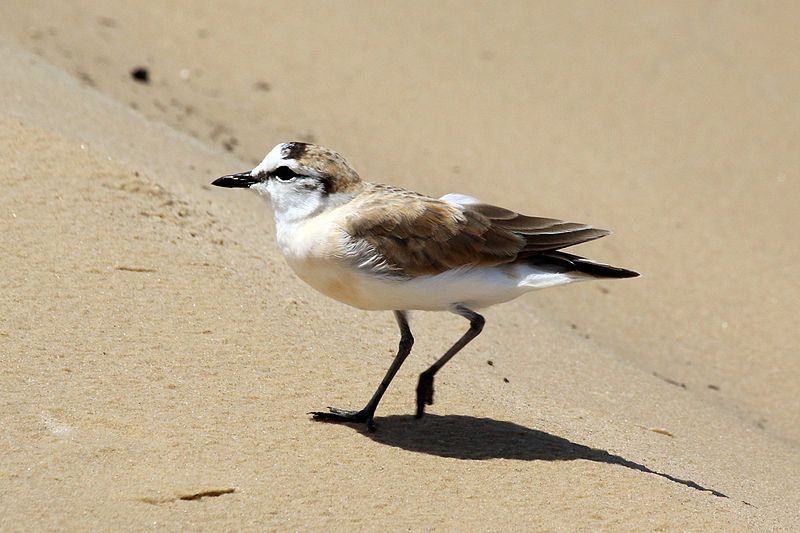
The white-fronted plover, or white-fronted sandplover, is a small shorebird belonging to the Charadriidae family.
This species can be found in various habitats along the coasts of sub-Saharan Africa and Madagascar, such as sandy beaches, dunes, mudflats, and the shores of rivers and lakes. They prefer to nest in shallow scrapes in the ground and typically lay clutches of one to three eggs.
The white-fronted plover is an omnivore whose diet consists of plant and animal matter. They generally feed on small insects, crustaceans, mollusks, other invertebrates, seeds, and other plant material.
The white-fronted plover is a relatively common species, but its population is declining due to habitat loss, degradation, and human disturbance. Its conservation status is listed as Least Concern by the IUCN.
| Kingdom | Animalia |
| Phylum | Chordata |
| Class | Aves |
| Order | Charadriiformes |
| Family | Charadriidae |
| Genus | Charadrius |
| Species | C. marginatus |
14. Horus Swift
The Horus swift is a small bird belonging to the swift family of birds. Its namesake is the ancient Egyptian god Horus, the god of the sun and son of Osiris and Isis.
This species of swift gets its name from the deity it was named after, with the species being found in Africa and the Middle East. Horus was an essential figure in ancient Egyptian mythology and religion and is often depicted with a falcon’s head.
The Horus Swift is considered a symbol of the god of the sun and an essential figure in ancient Egyptian culture and mythology. The Horus swift is a tiny bird with an average body length of 4-5 inches and a wingspan of 9-10 inches.
This species of swift is known for its highly maneuverable flight and ability to fly at high speeds.
The bird has a grey-brown head, back, wings, white throat and belly. The Horus swift is an active and adaptable species, making it one of the most widely distributed swift species in Africa and the Middle East.
Though the population of this species is believed to be declining, it is still considered to be of least Concern by the IUCN Red List.
The Horus swift is an integral part of the ecosystem, as it feeds on insects and helps control pest populations. In conclusion, the Horus swift is a small bird from the swift family, commemorating the ancient Egyptian god of the sun, son of Osiris and Isis.
With its highly maneuverable flight and ability to fly at high speeds, this species is an integral part of the ecosystem, helping to keep insect populations in check.
| Kingdom | Animalia |
| Phylum | Chordata |
| Class | Aves |
| Clade | Strisores |
| Order | Apodiformes |
| Family | Apodidae |
| Genus | Apus |
| Species | A. horus |
15. Mourning Collared Dove
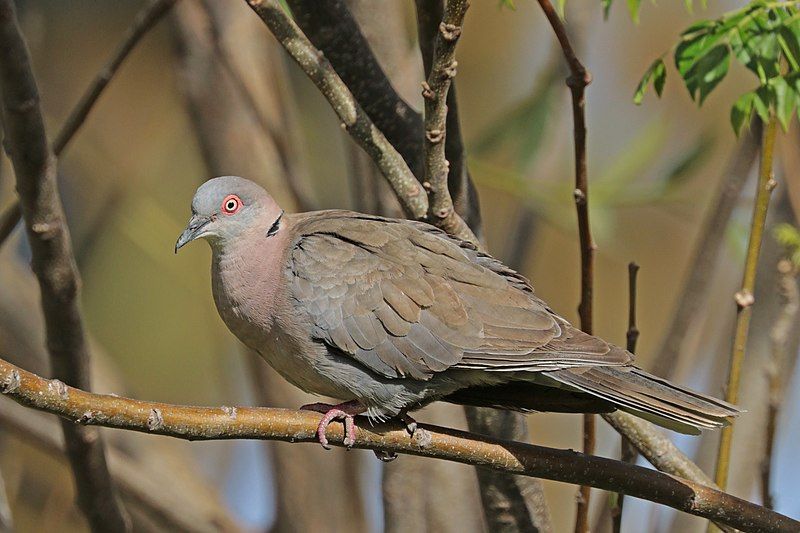
The mourning collared dove, also known as the African mourning dove, is a common dove found throughout Africa south of the Sahara. It is not related to the North American mourning dove but shares its name.
Mourning collared doves typically inhabit areas near water and can often be seen in the company of other doves. They are usually peaceful and interact peacefully with different species of doves.
Mourning collared doves are relatively abundant across their range and are considered a crucial species to the African ecosystem. They are often found in rural and urban areas, providing a source of food for small predators and a source of beauty to their natural habitats.
| Kingdom | Animalia |
| Phylum | Chordata |
| Class | Aves |
| Order | Columbiformes |
| Family | Columbidae |
| Genus | Streptopelia |
| Species | S. decipiens |
16. Red-chested Cuckoo
The Red-Chested Cuckoo is a cuckoo species from the family Cuculidae found in Africa south of the Sahara. It is a medium-sized bird, usually identified by its distinctive red chest.
The Red-Chested Cuckoo is known as “Piet-my-vrou,” derived from its call in Afrikaans. The call of the Red-Chested Cuckoo is a loud, musical call repeated in pairs of two or four.
It is often heard in the early morning and late afternoon and is used to mark territory and attract mates. It is also used as an alarm call when the bird is threatened. The Red-Chested Cuckoo is a terrestrial species, preferring to feed on the ground or in low vegetation.
Its diet consists of insects, including caterpillars, grasshoppers, and beetles. The Red-Chested Cuckoo is an integral part of the Afrikaans culture, and its call is widely recognized as a symbol of the African Savannah.
| Kingdom | Animalia |
| Phylum | Chordata |
| Class | Aves |
| Order | Cuculiformes |
| Family | Cuculidae |
| Genus | Cuculus |
| Species | C. solitarius |
17. Ring-necked Dove
The ring-necked dove is a species of dove that is commonly found in East and Southern Africa. It is a sedentary bird, meaning it does not migrate and instead chooses to stay in the exact location year-round.
This species is found in various open habitats, such as grasslands, savannas, and shrublands. It is also known as the Cape turtle dove or half-collared dove and is often found in large numbers in suitable habitats.
This species is easily identified by its distinctive plumage, which includes a distinct black collar around the neck and a greyish-brown body. The ring-necked dove is often seen in pairs or small flocks and is a gentle bird that is relatively easy to approach.
Depending on the season, this species feeds on various seeds and other food items. It builds its nest in trees, shrubs, or ground and lays two eggs. It is an important species to the local ecosystem, providing food for predators and scavengers.
| Kingdom | Animalia |
| Phylum | Chordata |
| Class | Aves |
| Order | Columbiformes |
| Family | Columbidae |
| Genus | Streptopelia |
| Species | S. capicola |
18. Spur-winged Goose
The spur-winged goose is an impressive waterbird native to the Sub-Saharan region of Africa. It belongs to the Anatidae family, which comprises many waterfowl species, such as geese and shelducks. This goose is a large bird, usually around 65-70 cm long.
Its wingspan can reach up to 1.2 m, and its body is covered in grey and white feathers. This species is also known for its distinctive black and white head and its long, slightly curved beak.
This beak enables it to feed on aquatic plants, and insects found near fresh water. Furthermore, the spur-winged goose has a loud, honking call that can be heard over considerable distances.
This species is usually found in pairs or small flocks and is a common sight in wetlands, marshes, lakes, and swamps. Despite its impressive size, the spur-winged goose is still vulnerable due to habitat destruction and hunting.
| Kingdom | Animalia |
| Phylum | Chordata |
| Class | Aves |
| Order | Anseriformes |
| Family | Anatidae |
| Genus | Plectropterus |
| Species | P. gambensis |
19. Red-billed teal
The red-billed teal, or red-billed duck, is a species of dabbling duck native to southern and eastern Africa, typically south of 10° S. This duck is a resident breeder, meaning it stays in the same area all year round rather than migrating.
It is a highly social bird, forming large flocks outside the breeding season. Despite this, it is known to fly great distances to find suitable bodies of water for breeding or foraging. This ability to travel long distances makes them a very adaptable species.
It is an abundant species with a wide range, and its populations are considered stable.
| Kingdom | Animalia |
| Phylum | Chordata |
| Class | Aves |
| Order | Anseriformes |
| Family | Anatidae |
| Genus | Anas |
| Species | A. erythrorhyncha |
20. Pennant-winged Nightjar
The Pennant-winged Nightjar is a species found in Africa, ranging from Nigeria in the north to South Africa in the south. It is an intra-African migrant, meaning the bird can migrate within the continent independently.
During the breeding season, this species of nightjar displays remarkable sexual dimorphism, meaning the males and females of the species can be easily distinguished from one another through differences in appearance.
The males are typically more extensive and colorful than the females, with the males having black and white feathers and a red-orange patch on their wings. The females, on the other hand, have brown feathers and lack the red-orange patch.
The Pennant-winged Nightjar is an essential species in the African ecosystem, and its ability to migrate within the continent helps it populate different areas.
| Kingdom | Animalia |
| Phylum | Chordata |
| Class | Aves |
| Clade | Strisores |
| Order | Caprimulgiformes |
| Family | Caprimulgidae |
| Genus | Caprimulgus |
| Species | C. vexillarius |
21. Cape Shoveler
The Cape shoveler is a species of dabbling duck found in South Africa and parts of Namibia, Botswana, Zimbabwe, southern Angola, Lesotho, Mozambique, and Zambia. It is a medium-sized duck, measuring between 51 to 53 centimeters in length, and is mainly non-migratory.
It does, however, undertake some local seasonal movements in search of food and shelter. The Cape shoveler is generally found in freshwater wetlands, lakes, estuaries, and dams.
The main diet of this species is plant matter, such as seeds of aquatic plants, small insects, larvae, mollusks, and other invertebrates. The Cape shoveler is a highly social species seen in large flocks during the winter months.
| Kingdom | Animalia |
| Phylum | Chordata |
| Class | Aves |
| Order | Anseriformes |
| Family | Anatidae |
| Genus | Spatula |
| Species | S. smithii |
22. Cape Teal
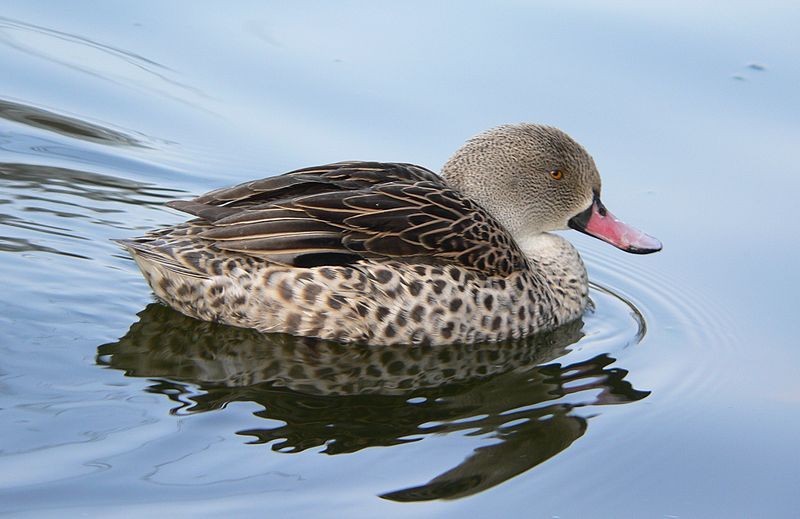
The Cape teal is a dabbling duck species found in wetlands across sub-Saharan Africa. It is also known as the Cape Wigeon or Cape Widgeon. This species is easily identifiable due to its size, which is 44-46 cm long.
It is a relatively small duck compared to other species. The Cape teal is a migratory species found in both the wet and dry regions of sub-Saharan Africa. The species prefers to feed and rest in shallow waters and on the banks of wetlands.
The diet of the Cape teal primarily consists of aquatic invertebrates such as insects, mollusks, and crustaceans. It also feeds on small fish and some plant material. The Cape teal is a gregarious species commonly seen in large flocks.
During breeding season, they form monogamous pairs and build their nests close to the water’s edge. This species is an integral part of the ecosystem as it helps control aquatic invertebrates’ population growth.
The Cape teal is classified as a species of minor Concern by the IUCN. However, it is threatened by habitat loss due to draining and conversion of wetlands for agriculture and human settlement. As a result, the population of this species is declining.
Conservationists are working to protect its habitat and ensure its long-term survival.
| Kingdom | Animalia |
| Phylum | Chordata |
| Class | Aves |
| Order | Anseriformes |
| Family | Anatidae |
| Genus | Anas |
| Species | A. capensis |
23. Southern Pochard
The southern pochard is a species of duck belonging to the genus Netta. This species is unique in that it has two distinct subspecies.
The South American pochard, or Netta erythrophthalma, is found in South America, while the African pochard, or Netta Brunner, is found in Africa. Both subspecies have the same essential characteristics, such as greyish-brown feathers, short bills, and yellow eyes.
However, the African pochard is typically more significant than the South American pochard, with a longer bill and darker feathers. The southern pochard is a common duck species found in different habitats such as rivers, ponds, and wetlands.
It is an omnivorous bird and feeds on various food sources, including insects, aquatic invertebrates, grasses, grains, and other plants.
They are also known to feed on small fish and amphibians. The southern pochard is a social species, often seen in large groups during the breeding season.
They form monogamous pairs, and their nesting behavior involves the male and female helping to build the nest and find food.
The female lays a clutch of eggs, and both parents help to incubate the eggs and care for the ducklings until they leave the nest. The southern pochard is an exciting duck species with two distinct subspecies.
It is a relatively common species found in various habitats across its range. Its omnivorous diet and social nature make it a fascinating species to observe.
| Kingdom | Animalia |
| Phylum | Chordata |
| Class | Aves |
| Order | Anseriformes |
| Family | Anatidae |
| Genus | Netta |
| Species | N. erythrophthalma |
24. Black-necked Grebe
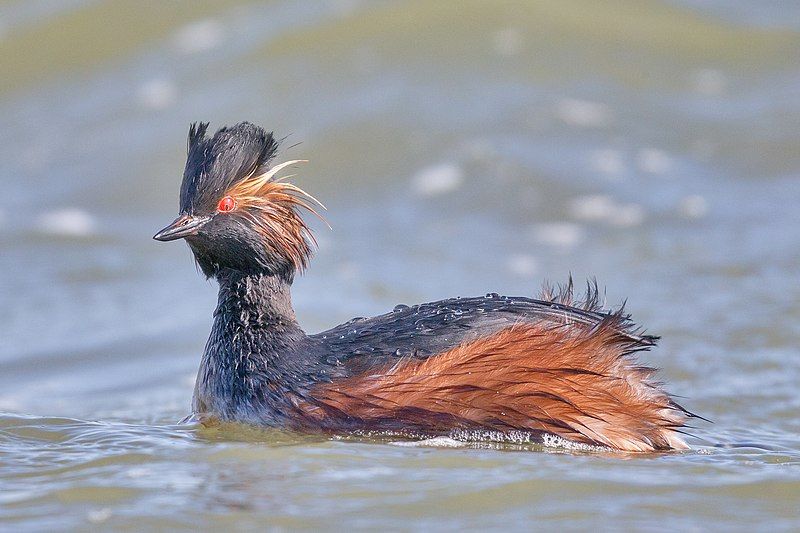
The black-necked grebe, also known as the eared grebe, is a species of water bird belonging to the grebe family. It was first documented in 1831 by Christian Ludwig Brehm, a German zoologist and ornithologist.
There are currently three accepted subspecies of this species, the nominate subspecies being the most widespread. The black-necked grebe is a medium-sized water bird, with a length of 30 to 37 cm (12 to 15 inches), and a wingspan of 55 to 60 cm (22 to 24 inches).
A black neck, a white face, and a black cap characterize it. The belly and chest are white, while the wings and back are dark gray. The legs are short and yellow. The eyes are yellow, and the bill is black.
The black-necked grebe is a solitary bird that feeds mainly on fish, aquatic insects, and crustaceans. It prefers to inhabit freshwater lakes, ponds, and marshes and is typically found in regions with abundant vegetation.
It is also known to migrate to warmer climates during the winter months. The black-necked grebe is a vulnerable species, and its population is in decline due to habitat destruction and pollution.
It is listed as Near Threatened by the International Union for Conservation of Nature (IUCN).
| Kingdom | Animalia |
| Phylum | Chordata |
| Class | Aves |
| Order | Podicipediformes |
| Family | Podicipedidae |
| Genus | Podiceps |
| Species | P. nigricollis |
Conclusion
Birds in Inhambane are an essential part of the local environment. They provide food and other ecological services to the people who live in the area.
Birds are also a source of beauty and joy; watching them in their natural habitats can be a rewarding experience. With the right conservation strategies, the birds of Inhambane can be protected for future generations.